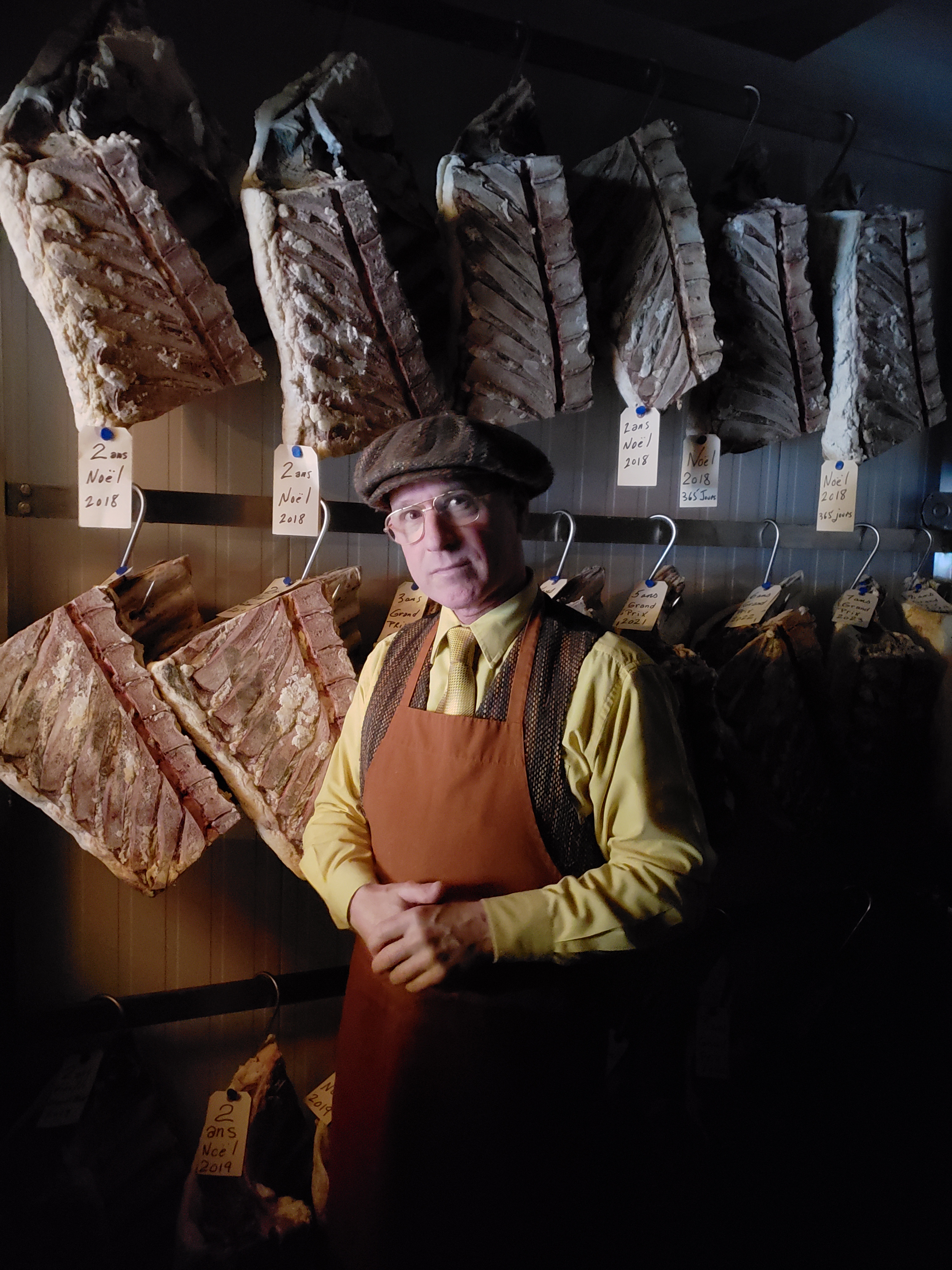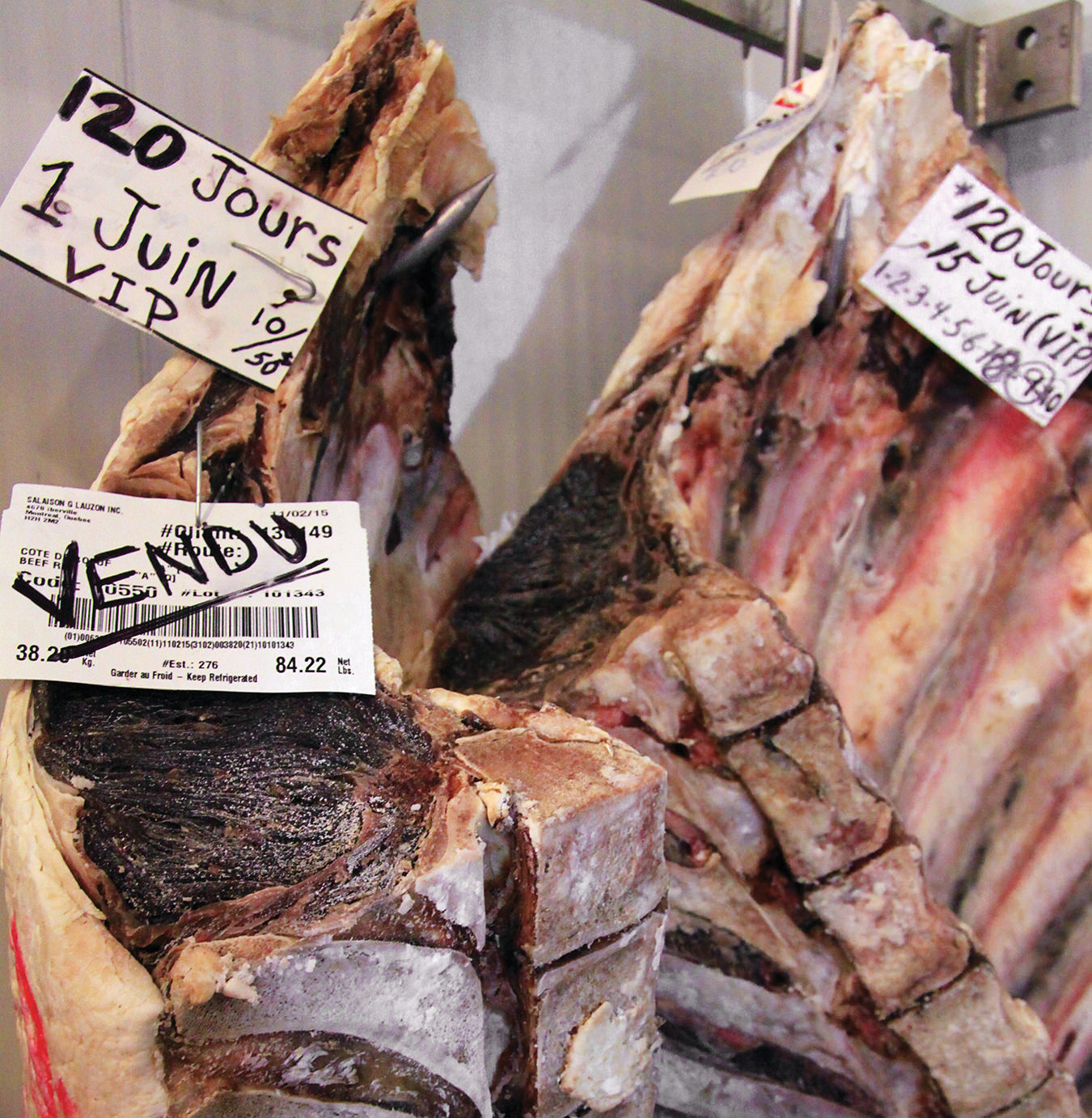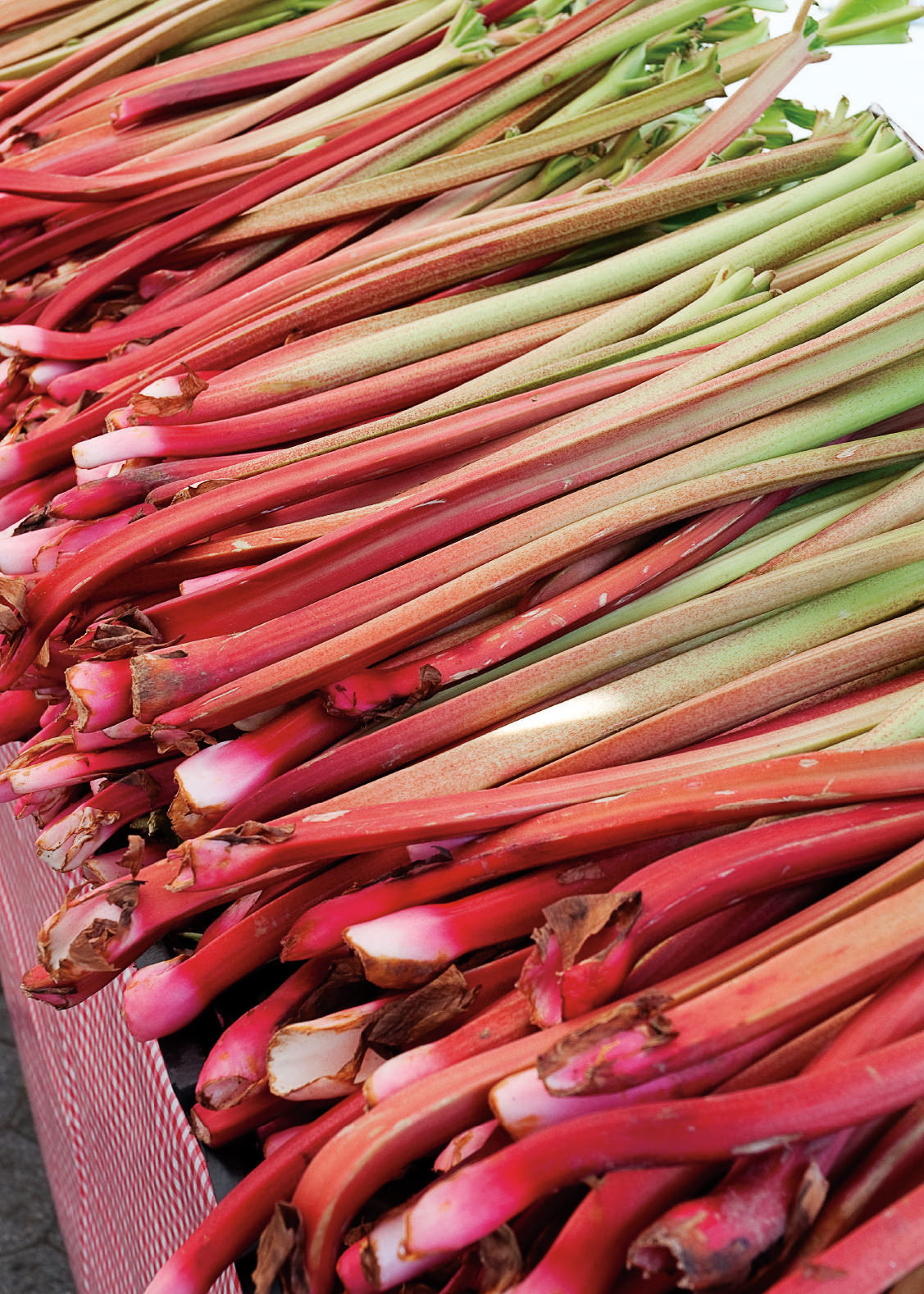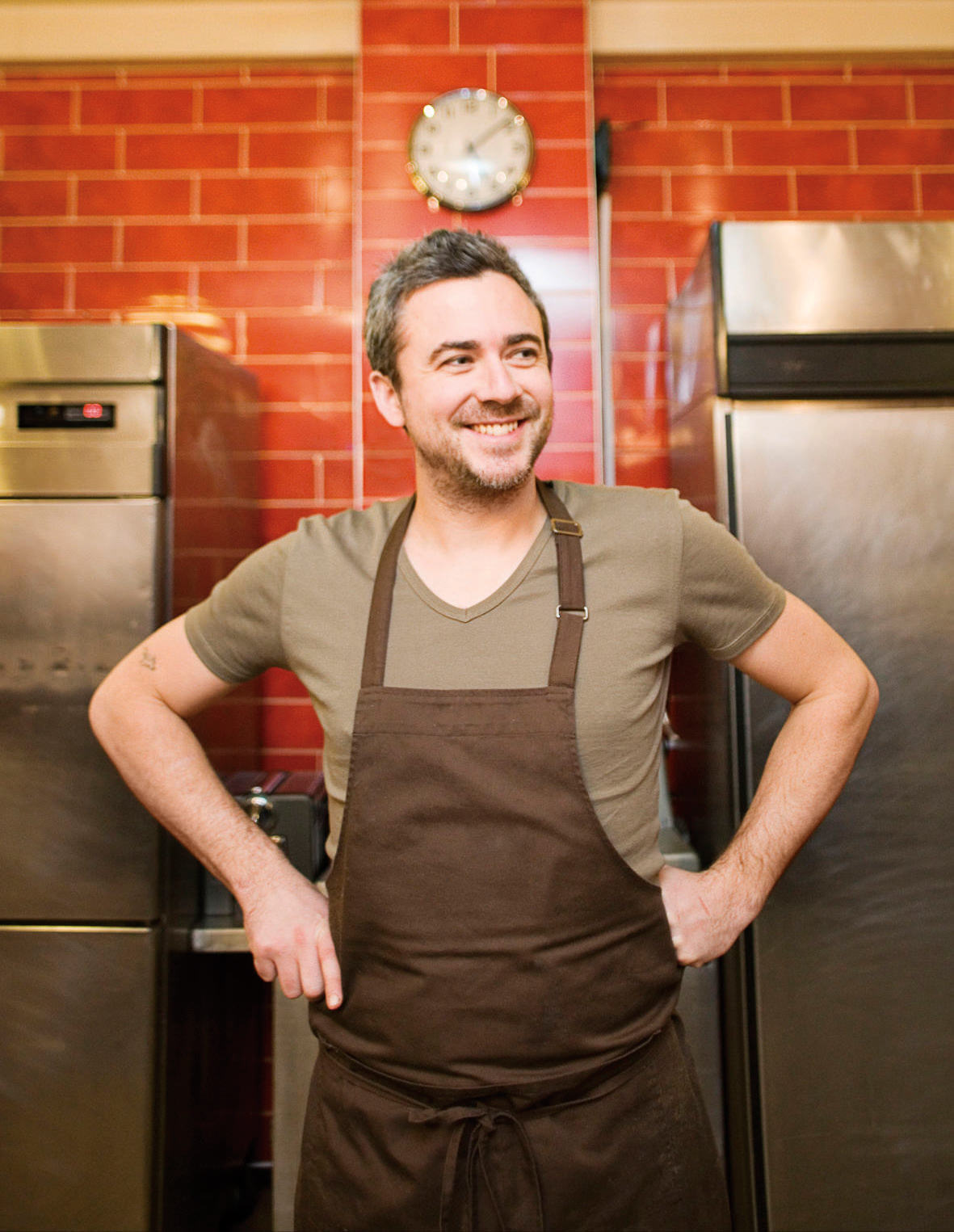Steak Meister Marc Bourg
The butcher's trade.

Marc Bourg dry ages steak in his boucherie Le Marchand du Bourg in Montreal.
Marc Bourg is pacing around my kitchen like an expectant father. “Is the cast iron skillet ready? Is the oven preheated?” he asks. I nod, twice. Bourg has every right to be nervous. On the counter is a two-and-a-half-inch-thick rib steak he’s been dreaming about for the past two years. A steak that was carved out of beef rib Bourg has been babying in his meat locker for 730 days. A steak worth $660.
Bourg is Montreal’s steak meister. His butcher shop, Le Marchand du Bourg, is a true steak boutique. We’re not talking Kobe or Wagyu. With Bourg it’s not about what it is, as much as how old it is. His steaks are aged for 40 to 120 to 180 to 365 days. The older cuts are dry-aged Quebec Angus beef, but the more recent ribs hail from Alberta. He also dabbles in wet-aged beef, but his specialty is dry-aged—and good luck finding anyone crazy enough to age it as long as Bourg. “I’m now working on a three-, a five-, a six-, and a seven-year-aged steak,” he says. But first we have to see if the two-year-old steak sitting on my counter is going to be delicious, or, worst-case scenario, putrid. Even the pacing Bourg has no idea what to expect.
Dry-aged beef is one of the biggest trends on the upscale restaurant scene today. When we say dry-aged, we are referring to meat hung in a controlled, refrigerated meat locker, with a specific humidity setting for the process to evolve slowly. To control bacteria, a constant flow of air around the meat is required and good ventilation is key. It takes some 11 days in such an environment for a steak to benefit from aging, becoming more tender and flavourful in the process. Bourg says the key to dry-aging beef is to begin with carcasses that have never been stored—vacuum-packed—in plastic bags, where the meat stews in its own juices. Even a small time in plastic compromises the outcome of the aged meat, he says.
Many restaurants sell steaks aged 20 to 30 days. But, lately, chefs and butchers have been experimenting with ribs aged far longer. Dry-aged meat is not for everyone. Bourg’s 40-day steak will set you back $60/kilogram and the 365-day steak will cost you $365/kilogram. Yet, when watching Bourg butchering an aged side of beef, you quickly understand why this is such a luxury foodstuff.
First, there’s the loss. As the meat literally rots from the outside, the aged side of beef darkens and develops a thick crust, often including a layer of mould, all of which is deftly removed by Bourg’s skilled hands. What’s left is the most inner part of the carcass—which, the older the meat, is smaller, stronger in flavour, and firmer in texture.
Then there’s the evaporation. That pool of bloody juices that accumulates underneath your average steak never occurs with dry-aged meat. As beef ages, the moisture evaporates, causing the carcass to shrink. After one year of aging, a 48-pound rib loses about 18 pounds. But the beauty of the process is not only that aging concentrates the flavour, it also tenderizes the flesh as enzymes contained in the muscle cells break down proteins into amino acids. They also turn the small amount of amino acids in the meat into sugars, which explains the sweet taste in aged meat.
But back to my countertop, where the steak is ready to go. If you can’t leave it at room temperature for at least four hours before cooking, says Bourg, don’t bother, as the cooking times will be greatly affected. The steaks can be cooked over charcoal, yet, for his precious two-year-aged meat, Bourg won’t risk any flare-ups. He begins by searing it for two minutes on each side over high heat on a cast iron flat-top, followed by seven minutes in a preheated 450-degree oven. He then allows the steak to rest for exactly 10 minutes before slicing it thickly, and finally sprinkling over a large pinch of fleur de sel. Bourg never seasons his steaks before cooking.
The initial impression is the meat’s tenderness and rich mouth feel. When all the moisture has evaporated, the fat provides all the juiciness in the flesh. As for the flavour, the 120-day-aged steak tasted faintly of Gorgonzola and liver (verging on foie gras) with increasing minerality as you approached the bone. The 40-day-aged steak was a jaw-dropper as well. Perhaps it is a bit less “funky” than the 120, but still delicious.
Yet the two-year-aged steak was like nothing I have ever tasted. We’re far from beefy flavours here. Instead think jamón ibérico (Pata Negra to be specific), hazelnuts, resin, and even a sort of powerful petrol taste in the connective tissue between beef and bone. With each bite tasting completely different, it was odd, intriguing, and pleasantly pungent. The best piece of meat—if not food—that has ever passed my lips.

Since publishing this story in our spring 2015 issue, Marc Bourg’s three-year dry-aged steak sold for $1,500 per kilogram at the Formula 1 Grand Prix this past June.
Le Marchand du Bourg, 1661 rue Beaubien E, Montréal, Quebec, Canada H2G 1L4, 514-439-3373.
_________
Never miss a story. Sign up for NUVO’s weekly newsletter here.




